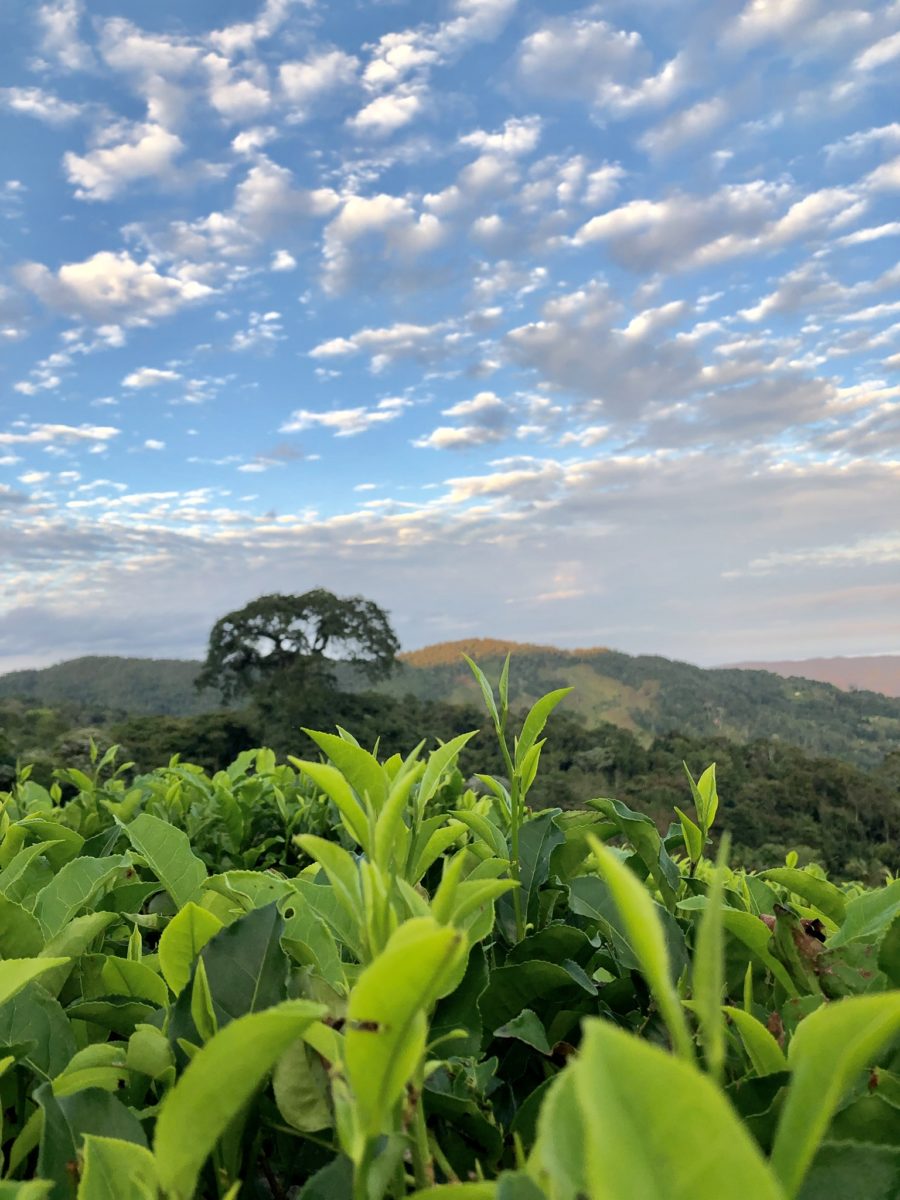
Sri Lankan cultivars were the first tea to arrive in Colombia whose mountainous Andean backbone offers an abundance of micro climates.
Tea there is grown in the western cordillera of the Andes, a few hundred miles from the Equator. Trees are planted on silvestres (wildflower meadows) and in subtropical forests at altitudes between 5,900 and 8,200 feet (1,800 and 2,050 meters) above sea level.
The region is teeming with wildlife and flora. Much is protected by national forests including the Pacific-facing Parque Nacional Natural Farallones, home to 540 bird species.
Known for its coffee, Colombia is fertile ground for many stimulants including the coco shrub and cacao. In 1946 the Secretariat of Agriculture of Valle del Cauca, intent on developing cash crops for export, (and diversifying the crops from only Sugar Cane and Coffee plantations) imported cultivars of both Camellia sinensis and C. Assámica, which at first were grown in the department of Cundinamarca, near Sasaima, and also north of Bogotá, in the department of Santander.
Joaquín Llano González and his son, Alberto Llano Buenaventura, were the first commercial growers on their farms La Sofía and Hacienda Himalaya, located in the corregimiento of Bitaco, in the mountains of the western Andes, where González owned coffee plantations.
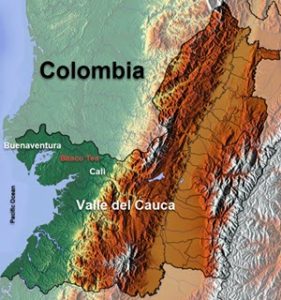
Alberto Llano traveled to Peru to study tea processing and, in 1954, produced the first finished teas on his farm. He named the brand Té La Sofía, in honor of his farm, Hacienda La Sophia. The tea rows he planted remain in production. In 1960 he acquired tea making equipment from the UK and launched the Hindú brand, a popular broken leaf black tea packed in tea bags. The original coffee plantation owned by Joaquin Llano stopped production mainly because of diseases of the coffee plants. By the 1970s the tea farm was prosperous. Alberto Llano Buenaventura died in 1982.
Return to orthodox production
The survival of commercial grade and specialty whole and broken leaf is a tribute to the persistence of Marichu de Llano, Alberto’s widow and the mother of seven.
In 1984 they re-established the tea estate as a family-owned company Agricola Himalaya SA. Buenaventura’s son Alberto Jr. designed the new production line for CTC. The building and installation of the CTC line was done after Alberto Jr´s death utilizing cut, tea, curl equipment from India making Hindú the most successful tea brand in Colombia. Alberto Jr. died in 1993 being one of the victims of the war in Colombia, but his mother and sisters persisted.
In 2011 Bitaco was certified sustainable by UTZ (now Rainforest Alliance-UTZ) and since 2013 Agrícola Himalaya SA has focused on their Bitaco brand’s fine-plucked organic certified specialty teas. There are now 62 hectares under tea, according to Santiago González, manages exports for the Bitaco Unique Colombian Tea brand.
Colombia will produce an estimated 15 metric tons of dry tea in 2021 of which 13 metric tons is exported. Germany is the most important trading partner followed by France and the US, the Czech Republic, Canada, the Netherlands, UK. and Taiwan, according to González. “We have presence with our Colombian origin in more than 34 countries, through our partners,” he said. Hindu remains an important regional brand with teas shipped to Guatemala, Mexico, and Panama. Argentina is the world’s ninth largest producer and dominates the CTC market in South America, but produces limited quantities of specialty teas.
Gonzales manages exports of everything that is grown at Agricola Himalaya. He says “the Bitaco harvest is done by hand and only the bud and one or two leaves are chosen, depending on the product, guaranteeing the best raw material of our tea plants, for the production of high quality teas.”
Bitaco first planted with a density of 8,000 plants per hectare, although the newer divisions, Gonzales tells us, are organized with a density of 12,000 per hectare. As for the types of plant cultivated, he says, “mayoritariamente (mostly) we have of sinensis origin, it could be said that the plantation has a percentage close to 10% of Camellia Sinensis Sinensis, 70% of a C. Sinensis hybrid with 20% Camellia Assámica.”
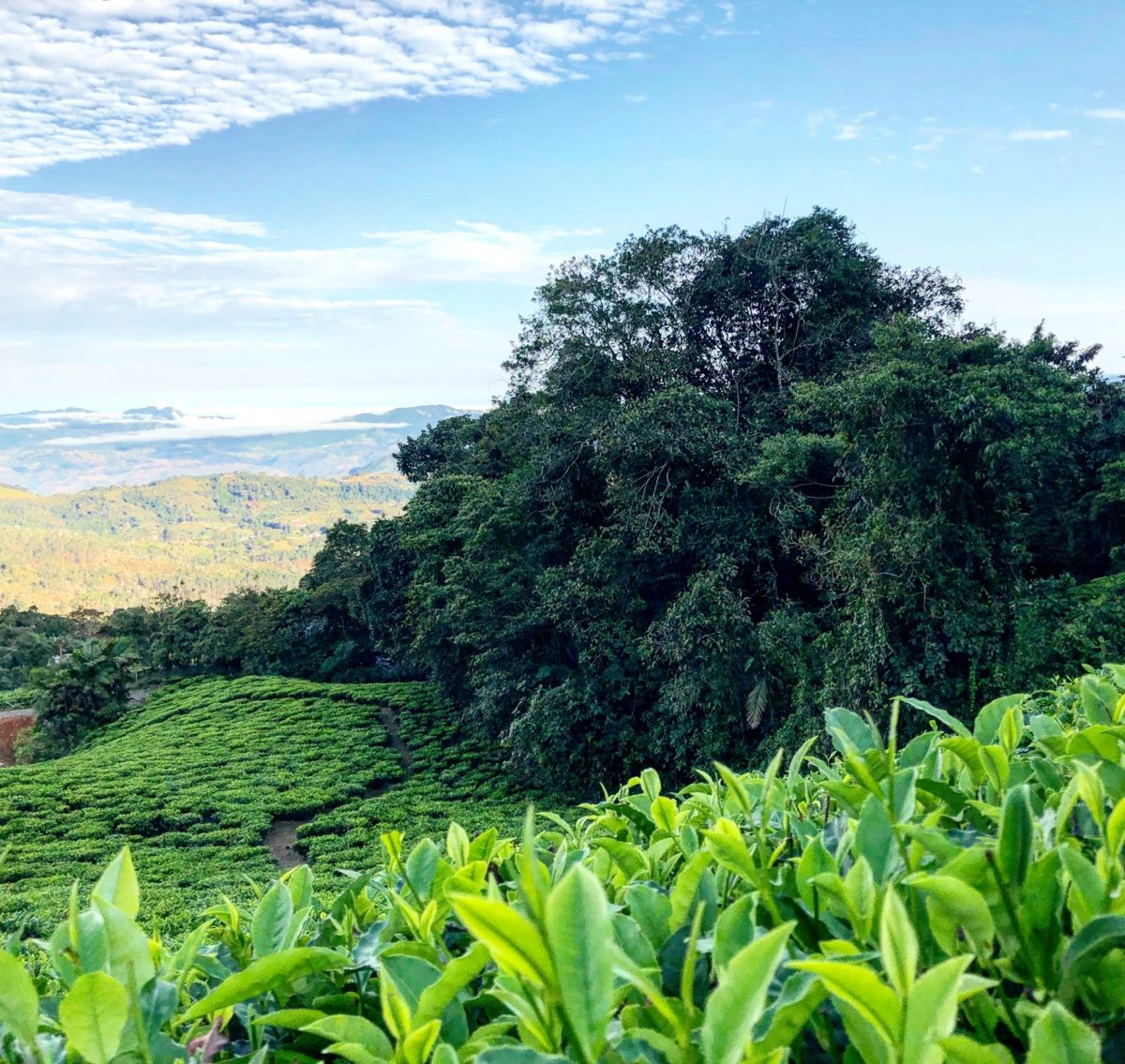
Teas from Bitaco
Andean Princess (blend)
La Cumbre Valle del Cauca Organic Black Emerald – Imperial Teas (UK)
La Cumbre Valle del Cauca Organic Emerald Green – Sinas Tea (Germany)
Cacao Kisses – Chado Tea (US International Tea Importers)
Lulada (Lulo fruit)
White Tea (organic)
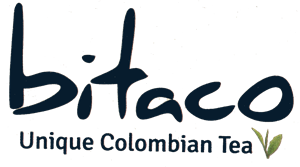
Bitaco harvests and produces tea throughout the year, from Monday to Saturday, resting on Sunday. González said the raw leaf is processed as follows: 60% of black tea of loose leaf, 25% of green tea of vaporized (withered and air dried) loose leaf, 10% of special white tea and 5% of Oolong and roasted green tea.” All teas are produced using orthodox processing methods. The estate operates a modern tea packaging facility but Bitaco stopped producing teas for the cut, tea, curl brand five years ago and does not expect to return to CTC production, says González.
Coffee is the most popular hot beverage in Colombia, which ranks third in per capita consumption at two million 60-kilo bags (not as much as Brazil and Mexico, but greater than most South American countries).
“The infusions market in Latin America, is mostly herbal teas, but consumption of green teas has grown a lot in the last 5-10 years, basically for the health-related benefits,” says Gonzales. “South America is a growing specialty tea market but small and not well educated in the complexities of tea,” he explains. “However, there is a boom of new tea shops that will help the market to grow and to teach the high-end consumers about the beautiful world of Camellia Sinensis,” he predicts.
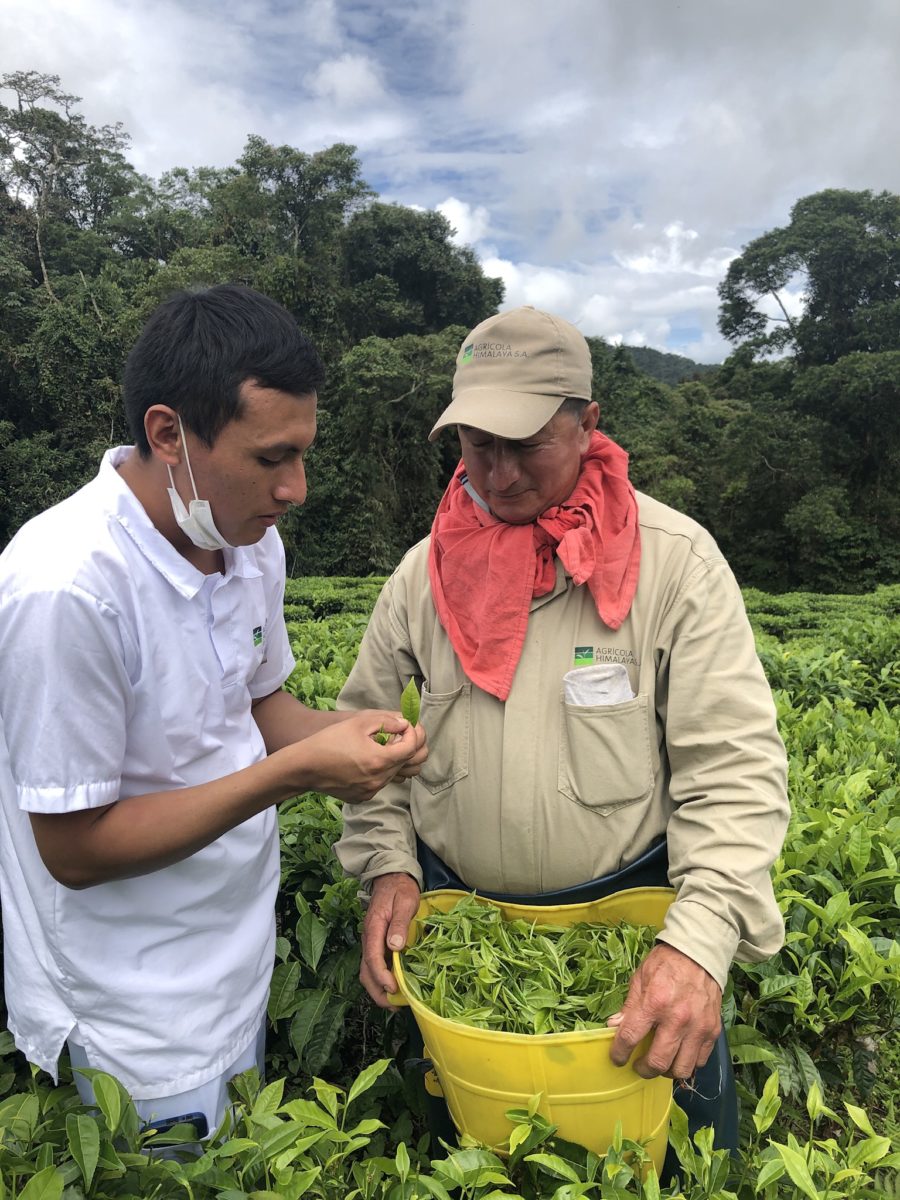
One example is Gongfu Cha Te’ by Nina Salazar, located in Pereira, a city of 580,000 west of Bogota and south of Manizales in the northern half of the country. The store specializes in all kinds of teas, in loose strand, personalized mixtures and handmade bags, where you will find rare varieties of tea, private tastings, tea ceremonies and business advice, according to Salazar.
Salazar, a tea blender and sommelier, tells us that although Colombians are not used to drinking tea, “I began to teach everything related to benefits, not only of pure teas, but of the blends and my store and my work in general became more to the part of health and well-being, it has been a very hard job, but at this point I feel happy and proud to see that not only in Pereira, but in nearby cities such as Armenia, Manizales, Salento have learned from my store and my work, I have tried to cram this passion to many people and the result has been excellent,” she says.
The Llano family carries forward the work of their ancestors, seeking to expand the farm to 100 hectares and continuing to produce world class tea, writes Gonzales.
“Marichu was a passionate woman working with the community to improve living conditions and social development of the region, including environmental protection of the Bitaco area,” he writes. She started many projects that today are run by the Agricola Himalaya Foundation, which is now managed by Maria Carlota Llano, one of Marichu’s daughters. “Carlota is a hard-working and committed woman seeking to improve the education of the young generation and the conservation of the ecosystem,” he writes.
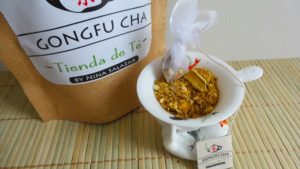
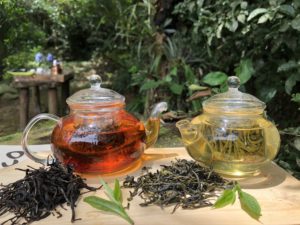
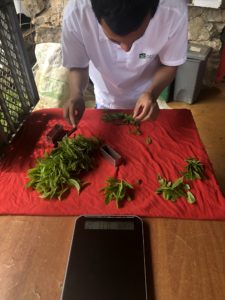
Hello
If i talk aboutCultivating Tea in India, Tea cultivation does not have long tradition in India as it started in the middle of nineteenth century only, when first tea plantations were established in Assam. However, tea cultivation has shown steady progress right from the beginning. At the time of Independence, tea gardens covered 3,011 lakh hectares producing 2.61 lakh tonnes of tea. The progress of tea cultivation in India from 1960-61 to 2003- 04
Regards
Dong Valley
Very informative.like to have more information.
Who are the common tea harvesters?… comparing men and women which number is largely involved In tea picking?